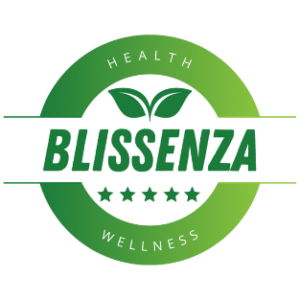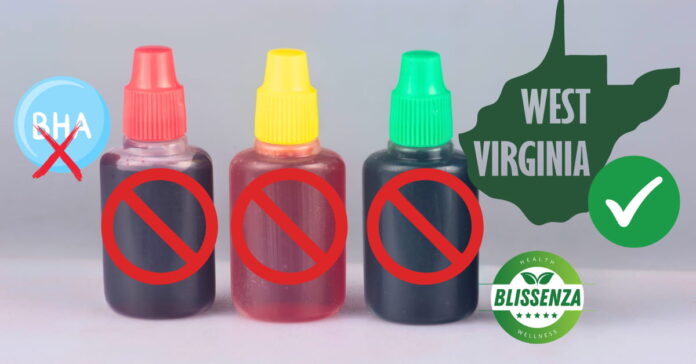In a historic move, West Virginia, a state in the U.S., has taken a bold step to protect the health of its residents by banning seven artificial food dyes and two preservatives in food and pharmaceutical products. This decision, signed into law on March 24, 2025, by Governor Patrick Morrisey, has positioned West Virginia at the forefront of a global debate on the safety of synthetic additives in our food.
But what does this mean for you, and how does it compare to what other countries in Latin America and Europe are doing? Join us as we explore this news and reflect on why this is a significant step forward for everyone.
Which Dyes and Preservatives Were Banned?
The new law, known as House Bill 2354 (HB 2354), bans the following additives:
- Artificial Dyes: Red Dye No. 3, Red Dye No. 40, Yellow Dye No. 5, Yellow Dye No. 6, Blue Dye No. 1, Blue Dye No. 2, and Green Dye No. 3.
- Preservatives: Butylated Hydroxyanisole (BHA) and Propylparaben.
The ban will be implemented in two phases: starting August 1, 2025, these dyes will be prohibited in foods served in school nutrition programs, and from January 1, 2028, the ban will extend to all food and pharmaceutical products sold in the state, this staggered timeline aims to give companies time to reformulate their products and avoid sharp price increases.
Why Ban These Additives?
The decision is rooted in concerns about the health effects of these additives, particularly on children. A 2021 report from California’s Office of Environmental Health Hazard Assessment suggested that dyes like Red No. 40, Yellow No. 5, and Yellow No. 6 may increase hyperactivity in some children (1).
Additionally, a 2007 study published in The Lancet found an association between artificial dyes and increased hyperactivity in children (2), although the FDA (U.S. Food and Drug Administration) reviewed this data in 2011 and 2019 and concluded that “a causal relationship between exposure to certified color additives and hyperactivity in children in the general population had not been established” (3).
On the other hand, BHA has been classified as a possible human carcinogen by the International Agency for Research on Cancer (IARC) since 1986 (4), and propylparaben has been linked to endocrine system disruptions, which could affect hormonal development (5).
Governor Morrisey emphasized that West Virginia, a state facing significant public health challenges, is the ideal place to lead the “Make America Healthy Again” movement, an initiative championed by the U.S. Secretary of Health and Human Services Robert F. Kennedy Jr.
A Growing Movement in the U.S.
West Virginia isn’t alone in this effort, at least 20 other states are considering similar laws to restrict the use of synthetic dyes and additives, which we think is fantastic. California for example, has already implemented measures to eliminate certain additives from foods sold in the state and banned synthetic dyes in school meals (6).
In January 2025, the FDA also revoked the authorization of Red No. 3 for ingested foods due to its link to cancer in laboratory animals (7)(8), a step that reinforces concerns about these chemicals.
However, not everyone agrees, the food industry, represented by groups like the American Beverage Association, issued a press release arguing that this ban could raise food prices and cause shortages, claiming that up to 60% of supermarket products might be affected, this gives us a sense of just how many products contain these dyes and preservatives.
How Does This Compare to Latin America?
In Latin America, the regulation of artificial dyes and food additives varies widely between countries, and overall, the region lags behind West Virginia. For instance, in Mexico, dyes like Red No. 40 and Yellow No. 5 are widely permitted and found in a vast array of ultra-processed products, from candies to beverages.
Although COFEPRIS (Federal Commission for Protection Against Sanitary Risks) regulates additives, there has been no significant ban on synthetic dyes, despite some studies being discussed in academic circles.
However, there are signs of progress, in a January 2025 statement, COFEPRIS announced that it is “conducting a risk analysis regarding Red No. 3” in light of international findings and decisions about this dye.
We hope they will soon ban not only this dye but also other artificial dyes and preservatives that have been shown to pose health risks to children and adults.
In 2020, Mexico introduced front-of-package warning labels for foods high in sugars, fats, and sodium, along with two additional warnings about caffeine and sweeteners, stating they are not recommended for children. However, dyes have not been a primary focus.
In Brazil, another major player in the region, the National Health Surveillance Agency (ANVISA) allows the use of synthetic dyes but requires them to be listed on labels. Yet, there are no specific bans, and products like sodas and candies continue to use Red No. 40 and Yellow No. 6 without restrictions.
Some smaller countries, like Chile, have made more progress with their Law 20.606 on warning labels and restrictions on advertising ultra-processed foods to children, but artificial dyes have not been directly banned.
Overall, Latin America seems more focused on tackling sugar and fat consumption than synthetic additives, this could be due to a lack of public pressure or the significant economic influence of the food industry in many countries in the region.
Frankly, Latin American countries are falling behind in addressing the risks of artificial dyes, and this lack of action may be exposing populations (especially children) to unnecessary risks.
What’s Happening in Europe?
Europe, on the other hand, is far ahead on this issue. The European Union (EU) has enforced strict regulations on food additives for years, for example, since 2010 the EU has required products containing certain artificial dyes, such as Yellow No. 5 and Red No. 40, to carry a warning label stating: “May have an adverse effect on activity and attention in children.” This measure was based on studies like the 2007 The Lancet study, which West Virginia also cites (9).
Moreover, some dyes, like Red No. 3, are banned in several European countries due to safety concerns. In the United Kingdom, for instance, many companies have reformulated their products to use natural colorants, such as beet juice or turmeric instead of synthetics. A well known example is Mountain Dew: in the U.S. it uses Yellow No. 5, but in the UK, it’s colored with beta-carotene, a natural pigment.
The EU also has a rigorous process for approving additives led by the European Food Safety Authority (EFSA), which continuously reevaluates the safety of dyes and preservatives, compared to West Virginia, Europe is leading the way, but the actions of this U.S. state are a significant step toward closing the gap, especially since the FDA has been somewhat slow to act at the federal level.
Should More Countries Join This Movement?
Absolutely, artificial dyes provide no nutritional value; their sole purpose is to make food visually appealing. If safe, natural alternatives like beet juice or turmeric already used in countries like the UK exist, why continue using chemicals that might be harmful? The evidence suggests that some children are more sensitive to these additives and BHA and propylparaben have documented risks, such as their potential carcinogenic and endocrine disrupting effects (10)(11).
In Latin America, where rates of obesity and chronic diseases are on the rise, banning these additives could be a step toward healthier eating, especially for children, who are unfortunately the biggest consumers of candies and ultra-processed drinks. Countries like Mexico and Brazil could follow West Virginia’s example and start regulating these chemicals more strictly, at the very least by requiring warning labels as in Europe.
However, there are challenges to consider, the food industry in Latin America might resist, arguing that reformulating products would increase costs, an argument also heard in West Virginia. Yet, while switching to natural ingredients may be more expensive initially, the long-term benefits for public health make it worthwhile.
What Can We Do?
West Virginia’s ban makes us reflect on what we eat and question the presence of unnecessary additives in our diets, the more countries that join this trend, the greater the pressure on the industry to offer safer, more natural products.
For now, a good first step is to read the labels of the products you buy. If you see Red No. 40, Yellow No. 5, or BHA on the ingredient list, consider seeking out more natural alternatives.
Small changes in your shopping cart can have a big impact on your health and your family’s well-being. What do you think of this measure? Do you believe your country or state should follow West Virginia’s lead? Let us know in the comments and share this valuable information!



